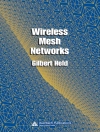This book overviews the drivers behind the smart city vision, describes its dimensions and introduces the reference architecture. It further enumerates and classifies threats targeting the smart city concept, links corresponding attacks, and traces the impact of these threats on operations, society and the environment.
This book also introduces analytics-driven situational awareness, provides an overview of the respective solutions and highlights the prevalent limitations of these methods. The research agenda derived from the study emphasizes the demand and challenges for developing holistic approaches to transition these methods to practice equipping the user with extensive knowledge regarding the detected attack instead of a sole indicator of ongoing malicious events. It introduces a cyber-situational awareness framework that can be integrated into smart city operations to provide timely evidence-based insights regarding cyber incidents and respective system responses to assist decision-making.
This book targets researchers working in cybersecurity as well as advanced-level computer science students focused on this field. Cybersecurity operators will also find this book useful as a reference guide.
Innehållsförteckning
Part I Cybersecurity of Smart City.- Chapter 1 Rise of Smart Cities.- Chapter 2 Cyber Brittleness of Smart Cities.- Part II Cyber Situational Awareness for Smart City.- Chapter 3 Cyber Situational Awareness Frontiers.- Chapter 4 Cyber Situational Awareness for Industrial Control Systems (ICS) Deployed in Smart City.- Chapter 5 Case Study: Situational Awareness for Water Treatment Systems.- Chapter 6 Looking ahead: Future Perspectives and Opportunities of Cyber Situational Awareness for Smart Cities.
Om författaren
Nataliia Neshenko, Ph.D., FCCA, PMP, PMI-ACP is Visiting Instructor at the Department of Information Technology and Operations Management (ITOM) at the College of Business, Florida Atlantic University. Her research focus is operational cybersecurity, including attack detection and characterization, risk management methodologies, the Internet of Things, and visual data mining and analysis. Her research findings are published in leading refereed security and data science journals and conferences. Dr. Neshenko is a recipient of the Best Paper Award at the 2017 IEEE International Symposium on Personal Indoor and Mobile Radio Communications. She also has over 16 years of project management experience in the field of business optimization in finance and IT.
Bou-Harb, Ph.D., CISSP received a Ph.D. degree in computer science from Concordia University, Montreal, Canada. He was a visiting research scientist at Carnegie Mellon University (CMU), Pittsburgh, PA, USA, in 2015–2016. He is currently the Director of The Cyber Center For Security and Analytics at the University of Texas at San Antonio (UTSA) and an Associate Professor at the Department of Information Systems and Cyber Security. Dr. Bou-Harb specializes in operational cyber security and data science as applicable to the national security challenge. He is also a research scientist at the National Cyber Forensic and Training Alliance (NCFTA) of Canada. His current research interests are operational cyber security, attack detection and characterization, Internet measurements, and cyber security for critical infrastructure. Dr. Bou-Harb has authored more than 120 refereed publications in leading security and data science venues; he is the recipient of 5 best research paper awards, including the prestigious ACM’s best digital forensics research paper. His research is funded by state and federal cyber security research grants valued at more than $8M.
Borko Furht, Ph.D. is Professor of Computer Science and Engineering at Florida Atlantic University and Director of the NSF Industry/University Cooperative Research Center for Advanced Knowledge Enablement. His areas of research include video and image processing and coding, Internet computing, and video applications in medicine, surveillance, and various industries. He published more than 300 referred papers, 45 books, and has about 60 patents and patent applications. He assured funding of about $25 million from government agencies such as NSF, Department of Navy, NASA, and NIH, and high-tech companies including Google, Motorola, Apple, IBM, Lexis Nexis, and others. He was Researcher of the Year at FAU in 2013 and 2019. He is a member of European Academy of Science. He has been an expert witness and consultant for a number of high-tech companies.












